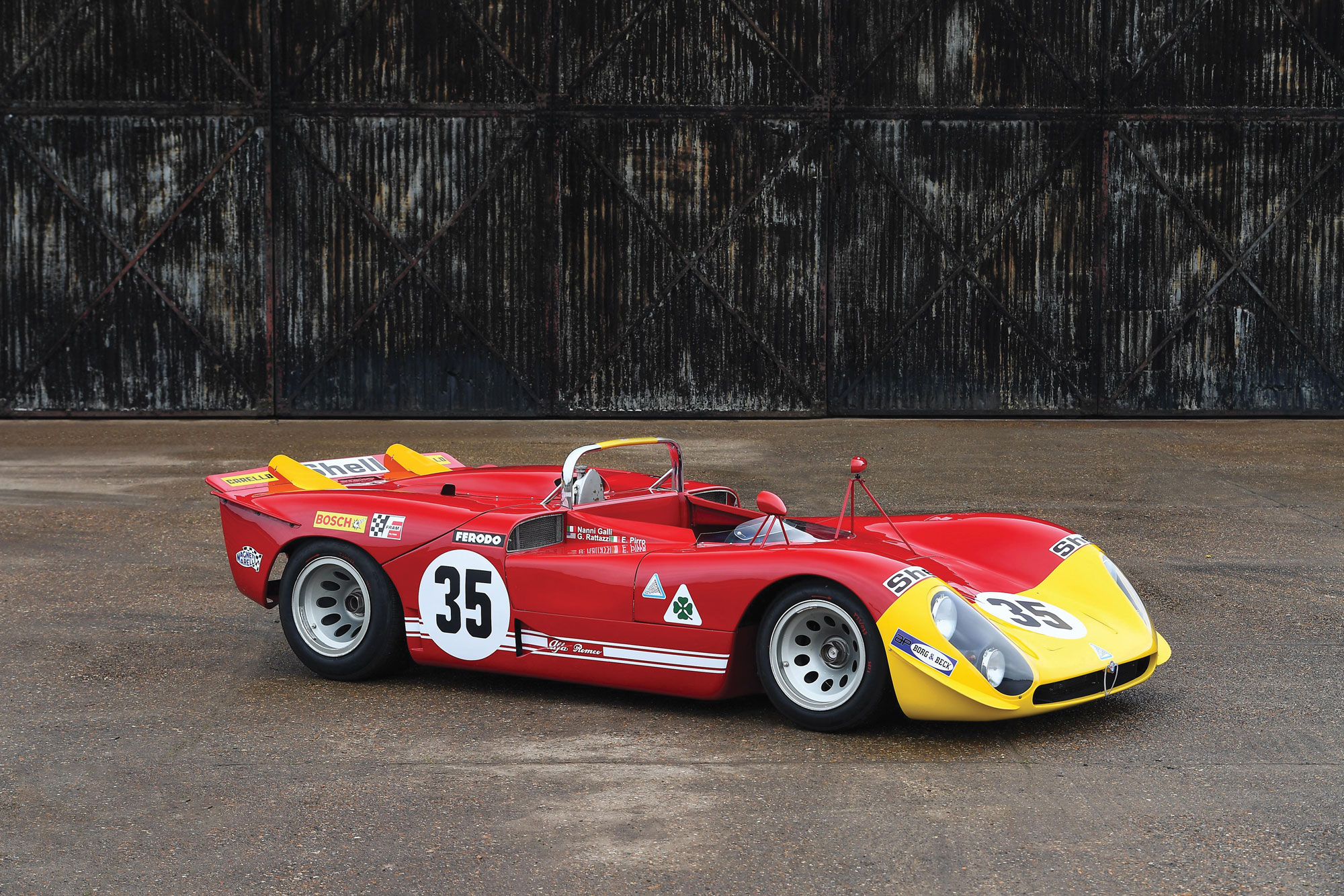Chassis Number: AR10580023
Having completed construction under the watchful eye of Carlo Chiti and his Autodelta outfit in 1969, this car joined the ranks of the other Tipo 33/3 factory cars in service at the time. Lining up against rival marques such as Ferrari and Porsche, Autodelta boasted a team of talented drivers who competed in the most demanding races. Tipo 33/3 results are difficult to trace due to carnet reasons, but Nanni Galli recognized this car as being present at the 1970 Targa Florio, in the hands of Toine Hezemans and Masten Gregory. Despite Autodelta getting on top of previous years’ reliability issues, all the 3-liter Tipo 33s suffered accidents, including this car after five laps.
Notably, Chiti had his sights set on the fabled 24 Hours of Le Mans title. According to a declaration by Galli, the Italian driver pledges to have piloted this particular Tipo 33/3 as one of four cars entered by Alfa Romeo’s factory outfit in the 1970 edition of Le Mans in June, driven alongside Rolf Stommelen. Disappointingly for Autodelta, after 220 laps of racing and near the end of the race, Galli and Stommelen were disqualified for receiving Outside Assistance for a push start. Despite this, Galli held particularly fond memories of the famously grueling edition as he and Stommelen were placed 2nd for much of the night after mastering the appallingly wet conditions.
In 1973, the car was sold by Chiti to its first private owner, Autodelta’s supplier of shock absorbers — as documented by a receipt of sale kept in the car’s history file.
